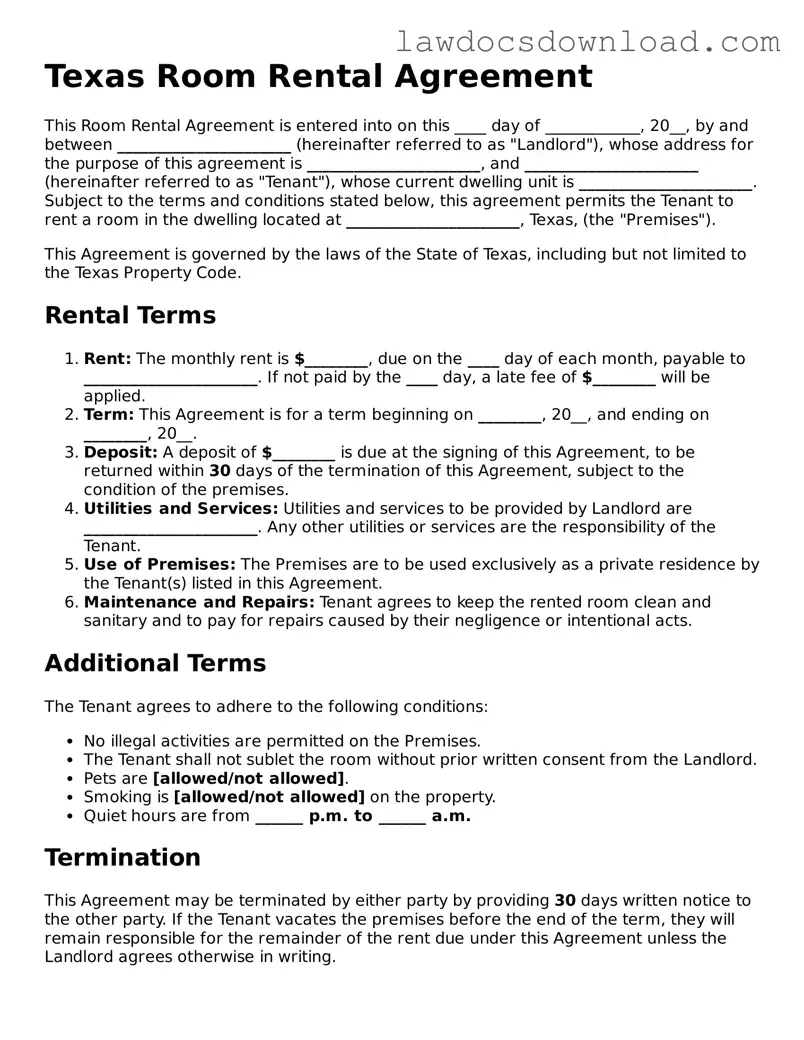Texas Room Rental Agreement
This Room Rental Agreement is entered into on this ____ day of ____________, 20__, by and between ______________________ (hereinafter referred to as "Landlord"), whose address for the purpose of this agreement is ______________________, and ______________________ (hereinafter referred to as "Tenant"), whose current dwelling unit is ______________________. Subject to the terms and conditions stated below, this agreement permits the Tenant to rent a room in the dwelling located at ______________________, Texas, (the "Premises").
This Agreement is governed by the laws of the State of Texas, including but not limited to the Texas Property Code.
Rental Terms
- Rent: The monthly rent is $________, due on the ____ day of each month, payable to ______________________. If not paid by the ____ day, a late fee of $________ will be applied.
- Term: This Agreement is for a term beginning on ________, 20__, and ending on ________, 20__.
- Deposit: A deposit of $________ is due at the signing of this Agreement, to be returned within 30 days of the termination of this Agreement, subject to the condition of the premises.
- Utilities and Services: Utilities and services to be provided by Landlord are ______________________. Any other utilities or services are the responsibility of the Tenant.
- Use of Premises: The Premises are to be used exclusively as a private residence by the Tenant(s) listed in this Agreement.
- Maintenance and Repairs: Tenant agrees to keep the rented room clean and sanitary and to pay for repairs caused by their negligence or intentional acts.
Additional Terms
The Tenant agrees to adhere to the following conditions:
- No illegal activities are permitted on the Premises.
- The Tenant shall not sublet the room without prior written consent from the Landlord.
- Pets are [allowed/not allowed].
- Smoking is [allowed/not allowed] on the property.
- Quiet hours are from ______ p.m. to ______ a.m.
Termination
This Agreement may be terminated by either party by providing 30 days written notice to the other party. If the Tenant vacates the premises before the end of the term, they will remain responsible for the remainder of the rent due under this Agreement unless the Landlord agrees otherwise in writing.
The parties hereby agree to the terms and conditions set forth in this Agreement and affix their signatures below:
______________________
Landlord Signature
Date: ______
______________________
Tenant Signature
Date: ______
